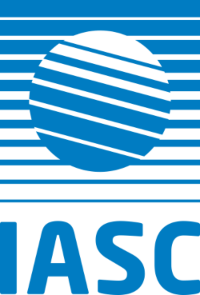Project Description
Coupled biological, physical and chemical processes drive complex interactions among ocean, sea-ice, snow, and atmosphere (O-SI-S-A) in the polar regions. Knowledge of these interactions is key to projecting sea-ice impacts on atmospheric gases, aerosols, and cloud cover over polar oceans, which in turn impact sea-ice melt, freeze-up and biogeochemical activity. Developing and maintaining connections among O-SI-S-A researchers requires cross-disciplinary training and developing connections among multidisciplinary scientists at an early career stage, a key goal of SCOR working group CIce2Clouds. The organization of a collaborative, interdisciplinary field school (the final component of CIce2Cloud’s capacity building efforts) provides a milestone in the lead-up to the next International Polar Year (IPY, 2032-33). The CIce2Clouds school aims to educate and train the next wave of early career researchers (ECR) on the methodological challenges cross-cutting sea-ice scientists are facing. The unique values and characteristics of the sea-ice system make it a fascinating topic for public outreach and CIce2Clouds-school students will help produce a documentary on sea ice and associated biogeochemical processes. Co-production of knowledge with local Indigenous communities is crucial in current and future Arctic research, hence the school will include sessions on co-production of knowledge methods and approaches, research ethics in working with Arctic Indigenous communities, and Indigenous data ownership principles. The school will be held at Saroma-ko Lagoon (Okhotsk Sea coast of Hokkaido, Japan). Saroma-Ko’s seasonal flat, homogeneous, easily accessible and safe sea ice provides an excellent training site for ECRs. Main school objectives are to 1. teach ECRs the main characteristics and complexities of the O-SI-S-A system, and the connection between each, with a focus on biogeochemical processes; 2. increase awareness of the unique characteristics of sea ice, its rapid changes, and the interactions with both the underlying water and the atmospheric boundary layer; 3. communicate and co-produce research with Arctic Indigenous communities.
Date and Location
Saroma-Ko lagoon, Japan | 28 February – 11 March 2026
IASC Working Groups funding the project
- Atmosphere WG
- Cryosphere WG
- Marine WG
Project Lead
Nadja Steiner (Department of Fisheries and Oceans Canada, Canada)
Year funded by IASC
2025
